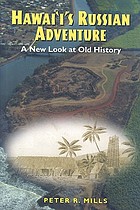After long months of procrastination, I’ve finally updated my own blog, Improbable Artifacts. I’m not going to cross-post here, because the latest post is very long, and more travelogue and cultural commentary than historical archaeology (though I did name-check James Deetz). However, the blogging we’re doing in this class has got me thinking about renewing my own efforts, and I thought it would be worth sharing a link.
I have been trying to return to the kind of writing I enjoyed in college, which is to say lots of free-association that somehow ends up looking like an argument after a while. Obviously this isn’t the kind of thing one sees in Nature, or even in a halfway-reputable middlebrow publication like The New Yorker, nor do I encourage you to emulate it at all, as it will probably get you banished from polite academic and literary circles.
Writing travelogues is especially tricky for obvious reasons: dropping in on an unfamiliar culture and commenting on it as if it were a coherent whole is perhaps acceptable in archaeology, but doesn’t fly when we’re talking about living, individually distinct people. (why archaeologists still get away with it is a bit of a mystery to me, but that’s another story). At the same time, anyone who’s traveled will know that there are certain senses of place and culture that are worth remarking upon, even at the risk of generalization. Talking about another culture is still one of the most convenient ways to comment on one’s own, through comparison. So, I try to convey those impressions while at the same time acknowledging that there are other realities out there that I haven’t touched on.
However, if my most recent post has value for the purposes of this class, it’s as an example (albeit kind of sloppy) of creative nonfiction style, of a sort that works well in blog posts. Notice that I alternate between reporting experiences and interpreting them, back and forth. Too much of one or the other will bore the reader to tears, but moving between the two allows for a number of things besides keeping the reader entertained. You can constantly refer from experience to theory or interpretation and vice versa, so that each remains a readily available reference for the other. This in turn adds a kind of hermeneutic quality that usually doesn’t survive the rigid division of academic papers into sections of theory, observations, hypotheses, etc. Finally, it ties the abstract, argumentative qualities of your theory and interpretation to a more concrete, graspable narrative, which, as we’ve seen, has many functions that go deep into the human subconscious. For those reasons, alternating story and interpretation every couple paragraphs or so is a useful thing to do in your blog posts, when it’s possible. Sometimes it doesn’t work–that’s always a judgment call you’ll have to make on your own. In the case of my own post, perhaps it didn’t work, but I be you can find others out there where it does.




